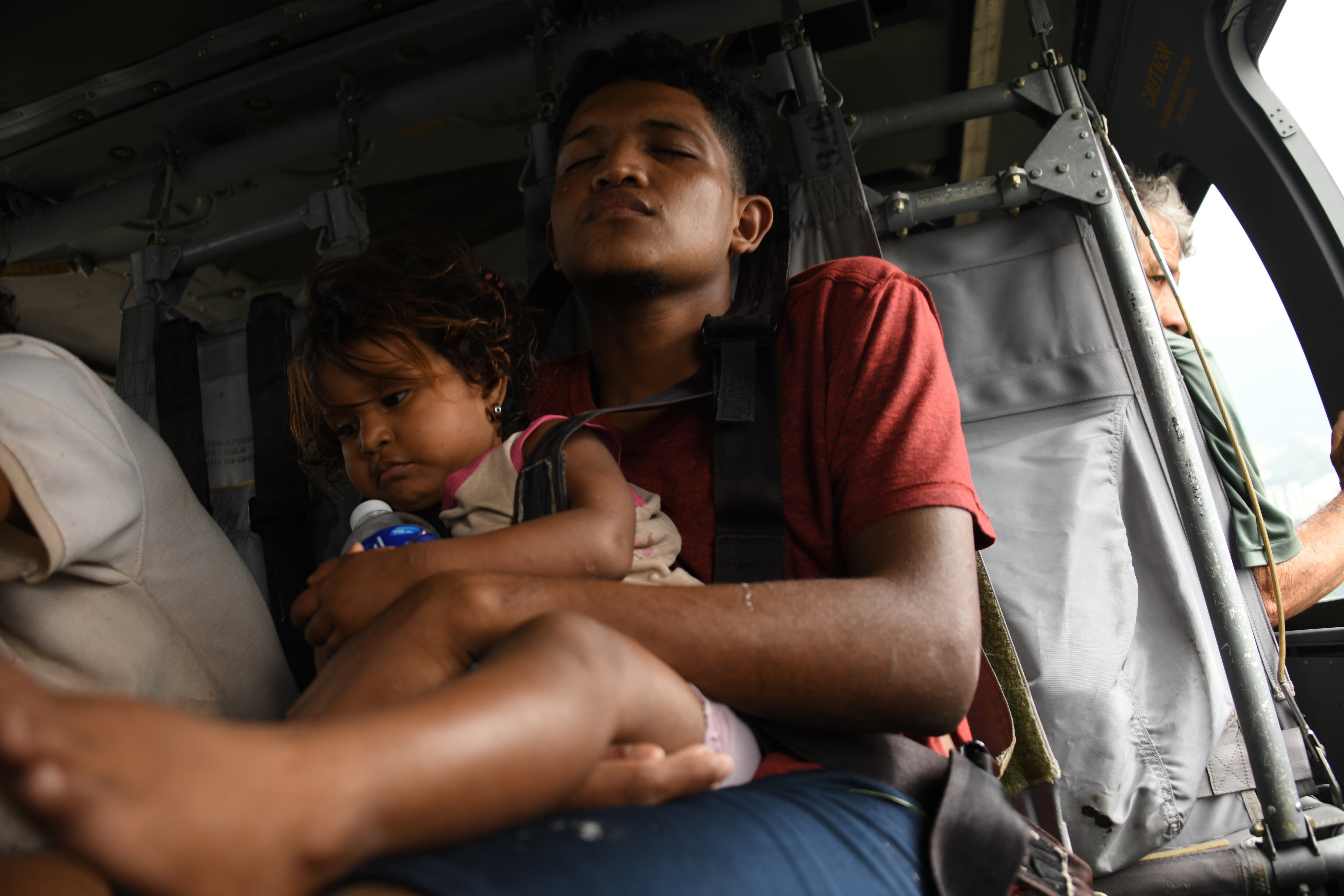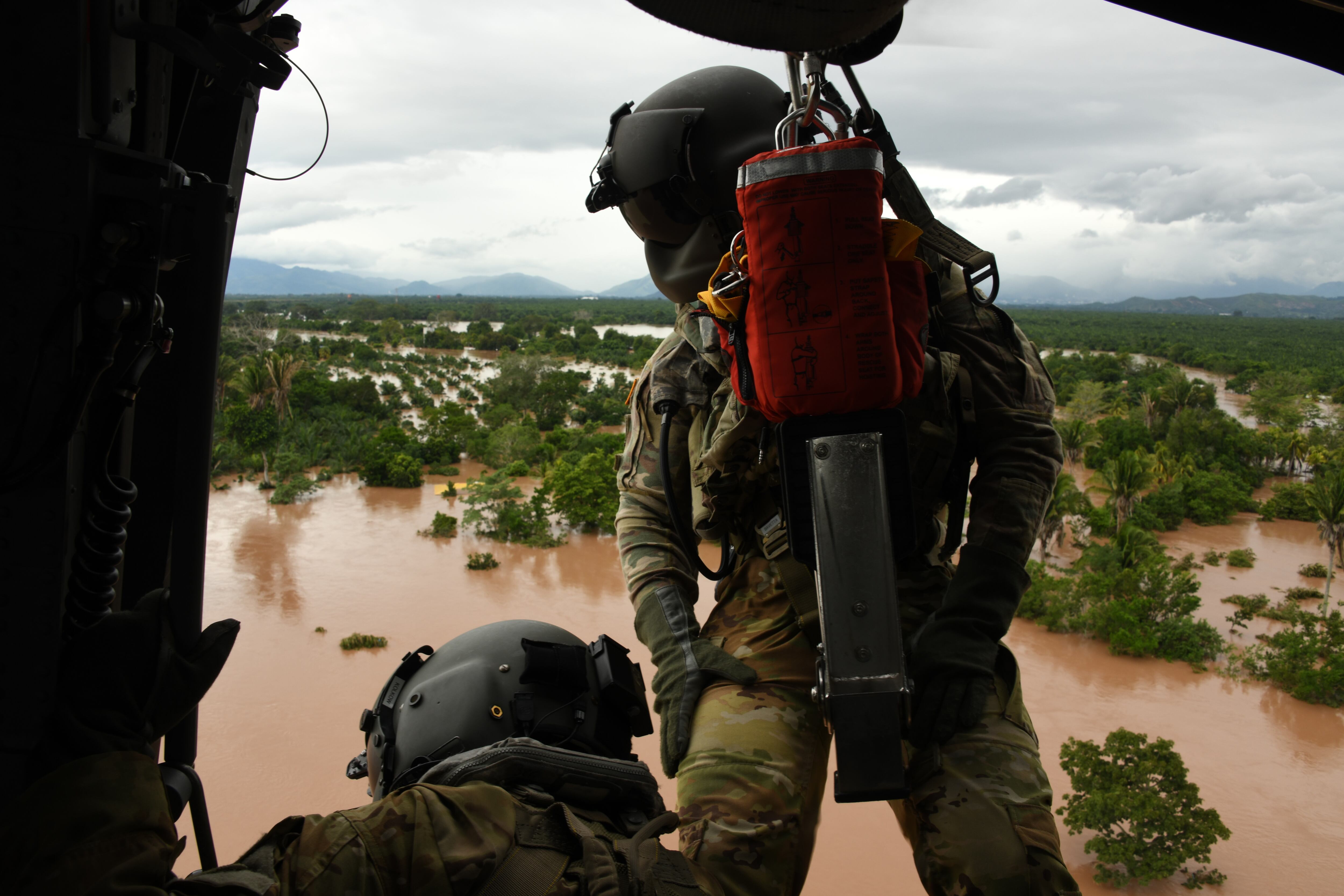Approximately 600 U.S. military personnel are supporting rescue efforts in Honduras and Panama after Hurricane Eta devastated Central America on Thursday.
SOUTCHOM’s Joint Task Force-Bravo mobilized Black Hawks, Chinooks, and teams of personnel from Soto Cano Air Base, Honduras, in less than 30 minutes on Thursday after SOUTHCOM approved calls for assistance from the Honduran and Panamanian governments.
“We are completely focused right now on immediate lifesaving actions, and that is predominantly airlift aviation rescue,” said Army Col. John Litchfield, commander of JTF-B.
Twenty-seven service members, two UH-60 Black Hawks and two CH-47 Chinooks rapidly deployed to Honduras on Nov. 5 to evaluate the situation unfolding in the city of San Pedro Sula, where hundreds of residents were forced to abandon their homes as the floodwaters rose.
A total of 69 JTF-B personnel, including a joint operations center and 20 aircrew members, were deployed to San Pedro Sula as of Saturday afternoon.
Another 36 personnel, one UH-60 Black Hawk and two CH-47 Chinooks were committed to rescue efforts in Panama on Thursday.
The rest of the task force remained at Soto Cano Air Base to support and coordinate efforts in both countries as well as organize a third team, similar to the one deployed to Panama, to assist the Guatemalan government. The team was expected to deploy sometime Saturday if weather allowed.
As of Saturday afternoon, the task force had saved 16 lives in Panama and 40 in Honduras, a number that is constantly growing with ongoing operations, according to Air Force Capt. Rachel Salpietra, JTF-B director of public affairs.
One of the largest concerns in both Panama and Guatemala is getting local search-and-rescue teams to towns and villages that have been cut off by flooding and landslides.

JTF-B’s many assets and personnel are fully devoted to Hurricane Eta response, Litchfield told Military Times. Their assets, including a combat support hospital, aviation battalion, military police company and air base squadron, are currently authorized to assist until Nov. 12, by which point Litchfield hopes they’ll be able to free enough assets from lifesaving efforts to deliver humanitarian aid and relief.
Task force assets maintain a 24-hour readiness posture for Central America, a response area expanded in recent years thanks to constant rehearsal and training, according to Litchfield. Disaster response is one of the task force’s many duties, which include operating a forward operating airfield, supporting U.S. operations in Central America, and facilitating the Central America community of interest.
“We’ve been here almost 40 years, and that has allowed us to build a unique set of capabilities, but more importantly relationships with really all of the Central American countries. They have a pretty good sense of what our capabilities are; they trust us,” said Litchfield, adding that he was most impressed by the speed of the group’s response.
The task force’s personnel, its colonel said, are top-notch, noting the unique capabilities of the 1st Battalion, 228th Aviation Regiment to fly over Central America’s mountainous terrain, negotiate challenging weather systems, and fly over water to land on naval vessels. The task force commander also commended the preparedness of JTF-B medical staff to practice in austere environments thanks to regular training alongside Central American military and civilian medical providers.

“I have never served in a unit that has as much goodwill overseas as Joint Task Force-Bravo does. They are highly regarded in the region,” said Litchfield. “We are seen as not just a demonstration of American commitment, resolve, and friendship to the region, but also, because of some of the things we’re able to do from a disaster relief perspective, our presence here is something that’s greatly appreciated, and we’re proud to assist our partners in their time of need.”
Harm Venhuizen is an editorial intern at Military Times. He is studying political science and philosophy at Calvin University, where he's also in the Army ROTC program.




